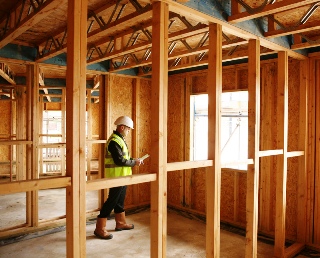Optimism has been in short supply over the last few years in a construction industry which has suffered a longer and deeper slump than any other sector, but recent surveys and forecasts from within industry have indicated that fortunes may be on the brink of turning around.
The latest forecasts from the Construction Products Association, published today, anticipate construction output growth of 2.2% in 2014 and 4.5% in 2015. The recovery will be led primarily by private housing in the short-term, with infrastructure activity expected to further boost activity in the medium-term.
 This is in addition to the results of the latest Markit/CIPS UK Construction Purchasing Managers' Index (PMI) which reported that housebuilding had been increasing at its fastest pace since June 2010, a solid increase in construction employment levels and ‘the strongest degree of positive sentiment about future output since May 2010’. The survey indicated an increase in all areas of construction in July, with housebuilding leading the way.
This is in addition to the results of the latest Markit/CIPS UK Construction Purchasing Managers' Index (PMI) which reported that housebuilding had been increasing at its fastest pace since June 2010, a solid increase in construction employment levels and ‘the strongest degree of positive sentiment about future output since May 2010’. The survey indicated an increase in all areas of construction in July, with housebuilding leading the way.
The CPA urged some caution, given the low starting point. Earlier this year the industry had seen its lowest levels since 2001 and even with growth in the second half of this year, output was likely to fall 1.5% for 2013. The Association noted several key risks to construction, most notably the dependency of the housing recovery on both a wider economic recovery and government support.
Regional disparities are evident with London and the South East showing the strongest levels of activity owing to major contracts and refurbishment projects. Elsewhere, contractors are experiencing poor workloads.
However, the CPA forecast is for construction to recover from 2014 with Growth over the next 12-18 months on account of a surge in housing sector activity, which is beginning to benefit from the Help to Buy scheme. With housing starts forecast to rise 39% by 2015, housebuilders have cited the chancellor's controversial Help to Buy scheme, which underwrites the deposits of homebuyers, as a key reason for a rise in demand for new homes, in addition to the Bank of England's Funding for Lending scheme.
Key points in the Forecast include:
• Construction output to fall 1.5% in 2013 before 2.2% growth in 2014 and 4.5% in 2015
• Private housing starts to rise 15% in 2013 with average growth of 9% per year from 2014
• Factories construction to rise 42% by 2017 driven by manufacturing and export growth
• Rail infrastructure to rise 41% by 2016 driven by Crossrail and station refurbishments
• Energy infrastructure to rise 89% by 2017
• Public sector construction to fall 5.2% in 2013 after an 11.4% fall last year
BWF Chief Executive Iain McIlwee commented:
“Without doubt the CPA’s latest figures match the story that we are hearing from members around the country. We are starting to see an uplift in activity, particularly in the housing sector.
“There have also been some encouraging policy announcements in the last week, such as the Planning Minister’s proposed relaxation of planning restrictions which could allow the redevelopment of unused retail properties for affordable homes and great opportunities for residential conversions of redundant barns, we have been pressing for these planning reforms for some time now.
“Announcements by L&G regarding levels of investment in the UK also add to growing confidence, but we must not be complacent – growth remains fragile and must be nurtured. There is still scope for greater growth in social housing, which remains at incredibly low levels given the pent up demand. And we still believe that the timing is now perfect for a cut in VAT on domestic refurbishment work to boost the RMI sector and to ensure that the growth is not overly reliant on the decisions of a relatively small number of companies in the newbuild housing sector.”
Iain McIlwee adds that the BWF will be keeping up its pressure on Government and contractor groups to support growth by adopting fair payment practices. He says:
“It is not uncommon for firms to go under as growth returns after prolonged tough times that have run down any cash reserves. This is a particularly tangible risk today as banks make short-term decisions and have little personal contact and understanding of the individual businesses of their clients.
“We will continue to campaign for fair payment for woodworking firms who make up a fundamentally important part of UK manufacturing. Our members span the full range, from family businesses to large corporations. They operate throughout the UK and provide genuine employment opportunities in parts of the country that are often areas of high unemployment.
“Nurturing growth, fair payment, trade credit and access to finance will be the critical issues for the next few months.”
For an update on BWF Lobbying work visit: www.bwf.org.uk/campaigns